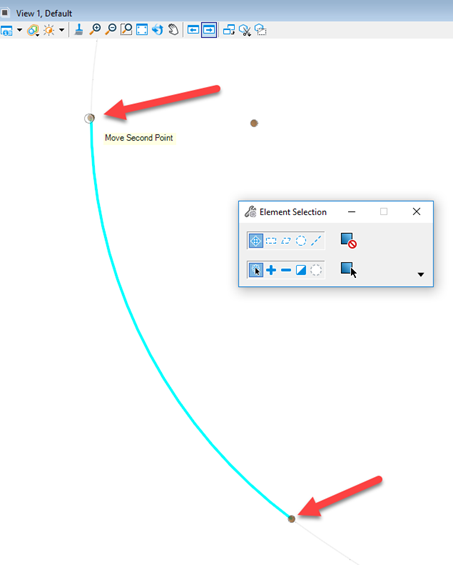Single Horizontal Regression
You can access this dialog from the following:
This tool creates a single horizontal geometry element that is a "best fit" to a set of regression points. Best fit means that the orthogonal projection from the element to the regression points is minimized. This tool generates either a linear element or a circular element. The length of the element will be all regression data (each point) that can project orthogonally onto the element.
This tool can work both on the plan view (regression line) or on the horizontal curvature view (curvature line). While it is possible to create a geometry in parts, using both regression line and curvature line, to switch from one view to other, tool should be restarted.
This tool creates a regression rule between the created geometry element and the regression line. This link allows dynamic regression analysis, that is changing the points used in the analysis of that element. Depending on where you used the regression tool (on plan or curvature diagram), you can modify the regression as follows.
If you used Curvature Diagram to create the element, use the manipulators on the regression box. You can also see the updated Maximum Slew and Standard error values in the properties of the created box or the geometry.
If you used Plan View to create the element, use the manipulators on the created geometry. You can see the updated Maximum Slew and Standard error values in the properties of the geometry.
Computation Methods
This tool performs linearization based on nonlinear least squares techniques and Newton-like methods, all of which are iterative processes. There are two least squares solvers in this tool. One is based on the Gauss-Jordan Method and the other is based on Singular Value Decomposition. For an introduction to these topics, see Matrix Computations, by Gene Golub and Charles Van Loan.
For a discussion of initialization and linearization issues, see Least Squares Fitting of Circles and Ellipses, by Walter Gander, Gene Golub, and Rolf Strebel.



